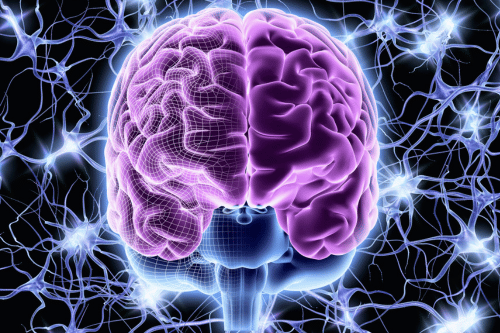Overstimulation Anxiety
In today’s fast-paced world, overstimulation anxiety is becoming an increasingly recognized phenomenon—especially in neurodiverse individuals and those navigating existing mental health conditions. Overstimulation occurs when the brain receives more sensory input than it can process, resulting in heightened stress and anxiety symptoms. While it’s often mistaken for general feelings of being overwhelmed, overstimulation anxiety is distinct and deeply rooted in neurological processes and sensory response patterns.
Understanding overstimulation anxiety and its connection to disorders such as attention-deficit/hyperactivity disorder (ADHD), autism spectrum disorder (ASD), and sensory processing disorder (SPD) is crucial for early intervention and effective management. This blog explores how overstimulation contributes to anxiety, identifies common triggers and symptoms, and offers actionable strategies to regain balance.
Definition of Overstimulation
Overstimulation refers to a state in which the brain is bombarded with excessive sensory input—visual, auditory, tactile, or emotional—beyond its capacity to regulate. This triggers a sensory overload episode, where the individual may feel overwhelmed, disoriented, or distressed.
Unlike a temporary reaction to a stressful situation, sensory overstimulation reflects a deeper neurological difficulty in filtering and managing sensory experiences, particularly in individuals with sensory sensitivities or sensory processing issues.
Overview of Anxiety Symptoms
Anxiety manifests in various ways, including physical symptoms (racing heart, shallow breathing), cognitive distress (worry, rumination), and emotional outbursts. In clinical terms, anxiety disorders such as generalized anxiety disorder, post-traumatic stress disorder (PTSD), and individual anxiety disorder involve persistent symptoms that interfere with daily functioning.
When linked to sensory overstimulation, anxiety tends to emerge quickly and unpredictably, escalating into sensory overload symptoms like crying, irritability, or avoidance behaviors—especially in anxious children and school-aged children with neurodevelopmental differences.
Differentiating Overstimulation from Being Overwhelmed
While overstimulation and being overwhelmed often co-occur, they are not synonymous. Overwhelming can result from emotional or cognitive overload—too many responsibilities or social pressures. Overstimulation, by contrast, stems primarily from sensory input—such as bright lights, loud noises, or physical contact—that overloads the brain’s processing abilities.
Key Differences and Overlaps
| Factor | Overstimulation | Being Overwhelmed |
|---|---|---|
| Root Cause | Sensory input | Emotional/cognitive load |
| Common in | Neurodiverse individuals | Everyone |
| Typical Triggers | Crowded spaces, bright lights | Work, relationships, deadlines |
| Response | Flight response, shutdowns | Stress, irritability, withdrawal |
| Treatment Approach | Sensory reduction | Emotional regulation |
While the relationship between anxiety and these experiences is bidirectional, understanding sensory anxiety as a distinct entity allows for tailored management approaches.
Impact on Mental Health
The risk of overstimulation can contribute to both short-term discomfort and long-term mental health disorders. Prolonged exposure without proper coping strategies may lead to or worsen:
- PTSD
- Generalized Anxiety Disorder
- Defiant disorder (especially in children)
- Depression
- Sleep disturbances
Harvard Health reports that sensory overstimulation can affect brain function, particularly in the prefrontal cortex, which governs emotional regulation and decision-making.
Conditions Associated with Overstimulation
ADHD and Sensory Overload
Individuals with ADHD often exhibit heightened environmental sensitivity and a strong desire to escape stimulating environments. Sensory overload can worsen attention difficulties and emotional reactivity, leading to impulsive or apprehensive behavior.
Autism Spectrum Disorder
Children with autism spectrum and toddlers with autism spectrum frequently experience sensory issues. Overstimulation may result in repetitive behaviors, withdrawal, or intense meltdowns. Studies in the Preschool Anxiety Study reveal high reliability of irritability in preschool-age children on the spectrum.
Sensory Processing Disorder
Sensory processing disorder (SPD) involves difficulty interpreting sensory input, leading to extreme reactions to auditory experiences, physical contact, or visual clutter. Sensory overload episodes are common and often mistaken for behavioral defiance.
How the Brain Responds to Overstimulation
Stress Response Mechanisms
The active stress response is initiated when the brain perceives sensory input as threatening. The flight response—a primitive survival mechanism—is triggered, releasing adrenaline and cortisol. This flood of stress hormones increases levels of anxiety and physical arousal.
Neurological Changes
In overstimulation, the prefrontal cortex often loses regulation of the amygdala (the brain’s emotional center), making it harder to think clearly or self-soothe. Over time, this can lead to changes in adaptive behavior and indirect effects on social development and emotional intelligence.
Common Triggers of Overstimulation Anxiety
Crowded Environments
Crowded spaces like malls, concerts, or classrooms often contain loud noises, strong smells, and bright lights—all of which can trigger sensory overload symptoms.
Technology and Digital Overload
Constant notifications, flashing screens, and digital overload contribute to overstimulation in both children and adults. This is particularly impactful for school-age behavioral challenges.
Social Interactions and Social Media
Too much social interaction—especially when unstructured—can overwhelm individuals with sensory sensitivities. Social media also floods the brain with emotional stimuli, increasing feelings of anxiety and comparison-based distress.
Recognizing Symptoms of Overstimulation Anxiety
Physical Symptoms
- Headache
- Nausea
- Dizziness
- Sweating
- Shaking
- Racing heart
Emotional and Psychological Symptoms
- Irritability or emotional outbursts
- Difficulty focusing
- Withdrawal from social settings
- Apprehensive behavior
- Shutdowns or meltdowns
In preschool anxiety symptoms, might present as clinginess, crying, or defensiveness in adults when translated across age groups.
Effective Strategies for Managing Overstimulation Anxiety
Creating Calming Environments
Design a safe space at home or work that minimizes noise, harsh lighting, and clutter. Use weighted blankets, soft textures, and soothing colors to create sensory relief.
Reducing Sensory Inputs
Limit exposure to unnecessary screens, multitasking, or environments with overwhelming stimuli. Headphones or sunglasses can act as sensory shields.
Mindfulness and Relaxation Techniques
Practices like deep breathing exercises, guided imagery, and progressive muscle relaxation can lower the active stress response and regulate emotions.
Building Mental Resilience
Incorporate therapy, journaling, and mindfulness techniques to boost emotional tolerance and cognitive flexibility, especially in typically developing children and preschool-age children with emerging sensory needs.
Long-Term Strategies
Role of Therapy and Professional Support
Working with a mental health professional can help diagnose co-occurring anxiety disorders, customize coping plans, and explore therapeutic interventions such as:
- Cognitive Behavioral Therapy (CBT)
- Sensory Integration Therapy
- Exposure Therapy (for specific anxiety diagnoses)
Programs like Tennessee Behavioral Health also offer options that cater to anxiety or neurodiverse individuals with sensory challenges.
Practical Modifications for Daily Life
Routine Adjustments
Consistent routines help reduce the levels of anxiety symptoms by minimizing unpredictability. This is particularly effective for anxiety across studies and helpful in both the preschool period and the primary period.
Environmental Changes
Use soft lighting, noise-canceling tools, and reduced clutter to create a soothing space. Limit auditory experiences and intense sensory input in classrooms or workspaces.
Understanding Sensory Anxiety as a Distinct Entity
While anxiety through context conditioning and generalized fears are common across mental health conditions, sensory-related anxiety must be recognized as its category. Unlike typical anxiety symptoms constant in presentation, sensory overload often results in spikes tied to specific stimuli.
By distinguishing sensory anxiety from broader mental health conditions, clinicians and caregivers can develop tailored management approaches that consider both behavioral challenge variables and unique sensory response patterns.
Final Thoughts
Overstimulation anxiety is a multifaceted challenge that reflects the intricate workings of the neurodiverse brain and the overwhelming nature of modern life. Whether it’s in preschool-age children, school-aged children, or adults with mental health disorders, managing sensory overload begins with recognition, compassion, and evidence-based support.
By creating supportive environments, incorporating calming techniques, and seeking guidance from a mental health professional, individuals can reclaim peace from the chaos of overstimulation. Understanding this condition not only supports better mental health outcomes but fosters empathy in a world often too loud, too fast, and too much.
This article for publication may be used as an informative resource for parents, educators, clinicians, and anyone navigating the complexities of sensory overstimulation and anxiety.

FAQ's
Yes. High sensory input can lead to trouble falling or staying asleep, often due to lingering nervous system arousal.
Introverts may be more sensitive to sensory input, but overstimulation anxiety affects people across personality types.
While not specific to overstimulation, anxiety medications like SSRIs may help reduce overall symptoms when prescribed by a doctor.
Yes. Caffeine, sugar, and processed foods can heighten arousal and make sensory overload more likely. Balanced nutrition may reduce symptoms.







